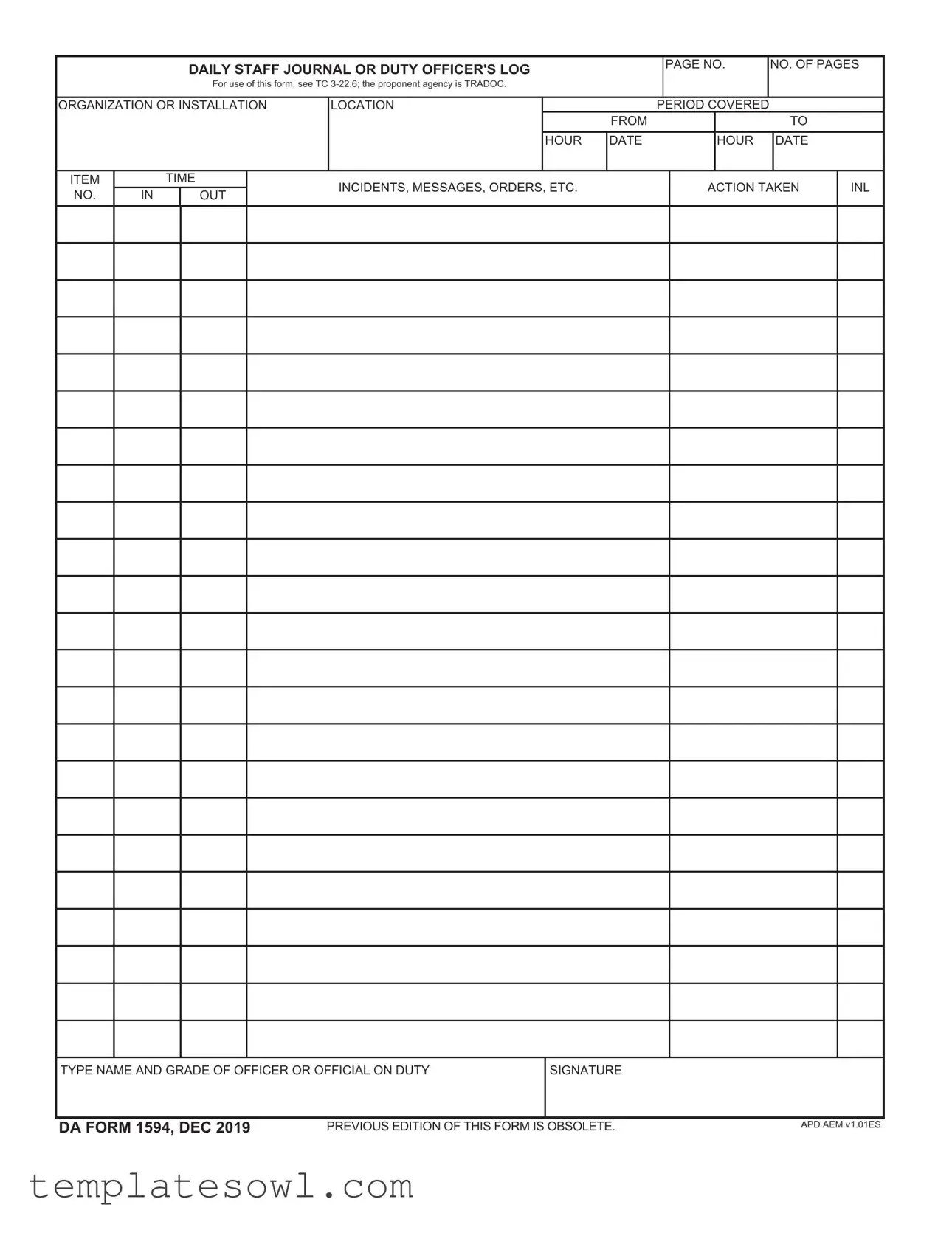What is the DA 1594 form used for?
The DA 1594 form, often referred to as the Daily Staff Journal or Duty Officer's Log, is used by military personnel to document daily activities, incidents, and communications. It helps maintain a clear record of the events that occur during a specific duty period. This form ensures accountability and provides a reliable reference for future review and analysis.
Who should fill out the DA 1594 form?
This form is typically filled out by the duty officer or staff members responsible for managing activities within military organizations. Anyone working in these roles who must maintain a log of incidents, messages, and actions taken during their shift is expected to complete the DA 1594.
What information is required on the DA 1594 form?
The DA 1594 requires details such as the organization or installation name, the period covered (start and end dates), specific times of incidents, and descriptions of events. Additionally, it captures actions taken in response to those incidents and includes the names, ranks, and signatures of the officials on duty. This comprehensive information helps create a thorough record of daily operations.
How often should the DA 1594 form be completed?
The DA 1594 should be completed daily during the officer’s shift. It should be filled out as incidents occur, rather than at the end of the shift. This practice not only helps prevent missing pertinent information but also promotes accuracy in documenting daily events.
Is there a specific format for filling out the DA 1594 form?
Yes, the DA 1594 follows a specific format outlined by military guidelines. Users must fill out each section clearly and legibly. Information needs to be organized chronologically, with careful attention to details such as times and descriptions to ensure clarity and usefulness for those reviewing the logs later.
What should I do with the completed DA 1594 form?
Once the DA 1594 form is completed, it should be filed according to the organization’s policies for record-keeping. It may also be used for briefings, investigations, or audits where prior actions and incidents need to be reviewed. Proper filing ensures that these records are accessible for future reference.

